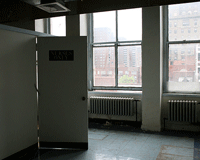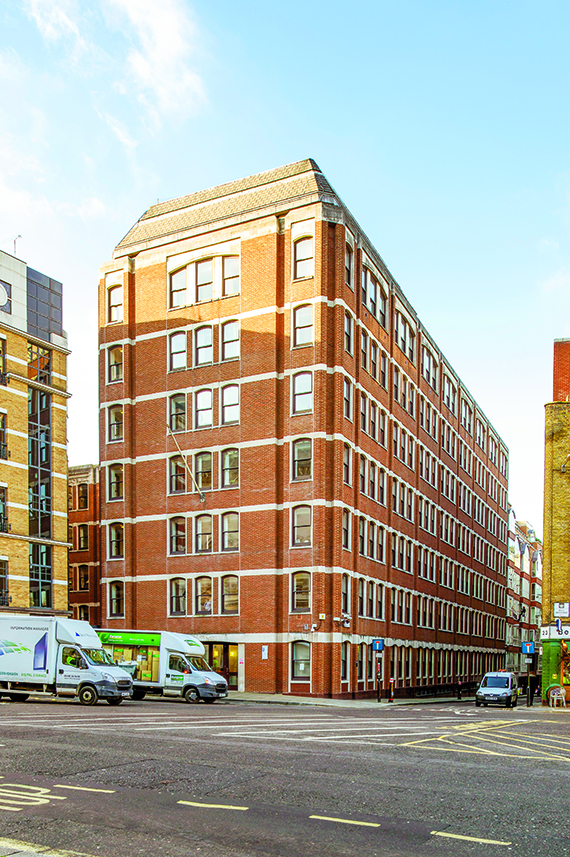 Counterintuitive it may be, but the dramatic increase in office rents across the capital is pushing up values of empty buildings. Anecdotal evidence has been swirling for some time, with agents reporting investors paying much more than expected for properties with vacant possession. This summer, Savills crunched the numbers for a large part of central London, including the City, City fringes and South Bank, and concluded that average values (average, remember, not prime) shot up by almost half in the past year alone.
Counterintuitive it may be, but the dramatic increase in office rents across the capital is pushing up values of empty buildings. Anecdotal evidence has been swirling for some time, with agents reporting investors paying much more than expected for properties with vacant possession. This summer, Savills crunched the numbers for a large part of central London, including the City, City fringes and South Bank, and concluded that average values (average, remember, not prime) shot up by almost half in the past year alone.
Present average values of £770 per sq ft are well above the £458 achieved at the height of the last cycle in 2007, as well as the 10-year average of £416. The upward movement seems set to continue for some time yet, so why are those buying willing to part company with ever-larger wads of cash?
In a market where the vacancy rate is dipping below 5% and the development pipeline remains constrained, quick refurbishment opportunities have become very attractive. “What investors get excited about is the speed buildings can be turned around. If they can get returns in the next two years, they can really sharpen their pencils,” reports Rob Buchele, central London investment team director at Savills, who suggests that the competitive state of the market is also driving values up. “There’s real hunger for a deal. If you’ve come second a couple of times already, it makes you more determined.”
The clamour for buildings with vacant or soon-to-be-vacant possession is coming from a wide variety of investors – property companies and opportunity funds, UK institutions and private foreign players. One thing they all have in common is that they are willing to step up the risk curve.
“A lot of people are tempted because they can factor in an element of profit from day one – based on rising site values,” says Buchele.
What investors do with a building once they have got hold of it will also be determined by their appetite for risk. “A lot of people are looking for short-term plays,” observes Knight Frank City investment partner Oliver Sadler. “If you’re after higher returns, you’ll get higher rents by delivering within 18 months.” That could mean more cheap-and-cheerful refurbs rather than thorough reworkings.
There are few discernible trends in type, age and location of buildings that are being snapped up in this way, though Savills suggests that investors are willing to consider smaller properties than they would have previously. Buchele acknowledges that the pipeline for empty buildings is difficult to predict, but expects this year’s final quarter will be particularly busy. Will this lead to some paying over the odds?
“I’m not sure about over the odds, but they are certainly being very aggressive and confident about occupational demand,” reckons Knight Frank’s Sadler, who believes that values for empty buildings are likely to maintain their upward trajectory for at least another 18 months.
During this time it will certainly be a case of caveat emptor, warns Michael Smyth, senior associate at Malcolm Hollis: “Savvy investors see vacant stock as a way of being able to maximise their returns on an asset, but there are a huge number of factors that could make it an expensive mistake, so undertaking due diligence prior to acquisition is advisable, if not imperative.”
Buying a vacant building – key considerations
As prices rise ever upwards, no one wants to buy a property that’s not all it appears cracked up to be, so what should would-be purchasers of empty or soon-to-be-vacant buildings be watching out for? Structural issues should be top of the list, advises Malcolm Hollis senior associate Michael Smyth, followed by a close examination of the property’s key specifications.
“It’s very rare that we recommend that a client doesn’t buy a building,” admits Smyth, although his clients tend to be at the more switched-on end of the spectrum and will already have done some pre-checking. Not all buyers are so thorough. And even seasoned players can be caught out if they are not careful. Smyth cites the case of a masonry-enclosed steel frame with clinker concrete floor that had not been maintained for a long time, resulting in structural and other issues. On his advice, the sale was aborted. Similarly, he warned off the purchaser of a high-end residential building: “It was built to a superficial standard. It looked very good outside and in, but the actual build quality was very poor, so it wouldn’t have the life expectancy it should have.”
Smyth adds that partially vacant properties hold additional pitfalls for the unwary. He recalls a residential redevelopment where a retail tenant had been retained on the ground floor, but the reconfiguration works required holes to be cut in the slab of the first floor. He notes: “In this kind of case, the purchaser needs to check that this is possible, not only practically, but also that there is nothing in the retail tenant’s lease that would preclude the work going ahead in the first place.”

Purchaser view
Investors and developers aren’t the only ones entering the fray for empty buildings. Owner-occupiers are also eyeing up potential opportunities and not necessarily for reuse as offices. When chartered institute City & Guilds Group put its former headquarters at 24-30 West Smithfield, EC1, on the market earlier this year for £35m it expected a fair amount of interest, not least because the 74,500 sq ft office block came with planning consent for conversion to 74 flats.
Surprisingly, though, it was commercial interests, rather than housing, which triumphed. When an initial deal with Karlin Real Estate to redevelop the building for shared office space provider We Work went pear-shaped, it was a hotel operator that stepped into the frame, paying £54.4m. Whitbread, scouring the capital for sites to house both Premier Inn and its new hub by Premier Inn concept, wasn’t fazed by either the price or the lack of a leisure consent. “The fact that the building already had planning permission for residential meant that the principle of a loss of offices was already overcome,” explains Jonathan Langdon, acquisition manager, West End & City, at Whitbread. “That gave us the confidence to purchase unconditionally.”
The hotel operator fought off stiff competition for what it hopes will become a 272-bedroom Premier Inn that will be within five minutes’ walk of Farringdon’s Crossrail station. The flagship location came at a cost, however: a capital value of around £735 per sq ft. Langdon’s response is bullish: “The fact that values are moving on doesn’t scare us. We’re here to be competitive for the right opportunity. We’re happy to take slightly more off-pitch office buildings. We know our room rates and other metrics so we know how much we can afford.”
Langdon reckons that since the deal was struck, capital values have risen to £750 per sq ft, so the company has already seen an uptick in value. Yet it has no plans to extract capital in a sale-and-leaseback deal, either at West Smithfield or the pair of buildings in Victoria it bought freehold for £80m this summer: 21 Tothill Street and 15 Dacre Street, both SW1.
“We’re looking to the long-term and for operational certainty – not seeking an in-and-out strategy,” confirms Langdon. “We’re interested in securing the sites and trading the bedrooms.” With 10,000 of the latter in the capital and a target of double that number by 2020, Whitbread will be a contender for any sites above 20,000 sq ft, though Langdon admits he won’t mind if a property doesn’t become vacant straight away: “We’ll look at buildings with one to two years’ lease remaining to cover the planning and development period.”










